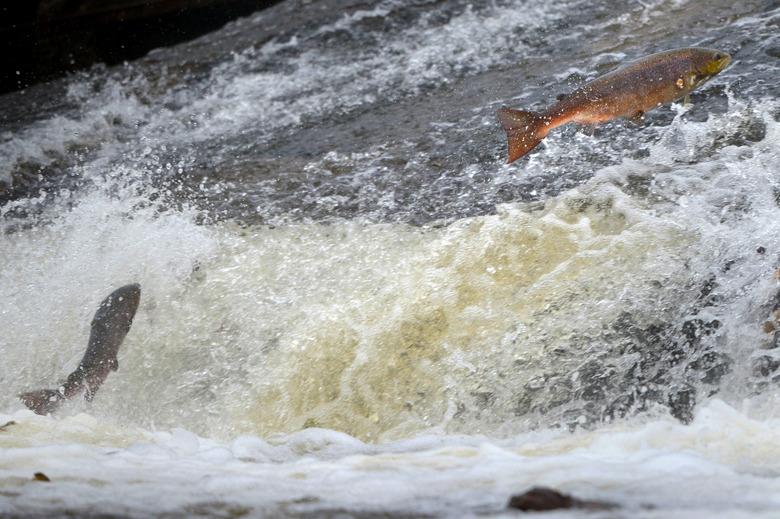Is Acid Rain Harmful To Animals?
Acid rain is precipitation containing nitric and sulfuric acids. While some natural occurrences like volcanoes and rotting vegetation contribute to these acids, it is the human activity of burning fossil fuels that causes a majority of acid rain. When acid rain reaches the surface of the Earth, it can devastate ecological systems by killing populations, eliminating food sources and reducing biodiversity.
Acid Rain and Water Sources
Acid Rain and Water Sources
The U.S. Environmental Protection Agency says the effects of acid rain are most obvious in aquatic ecosystems. Water runoff from forests and roads often flows into streams, lakes and marshes, and acid rain also falls directly into these water sources. While some water sources are naturally more acidic, most lakes and streams have a pH between 6 and 8. As of 2012, acid rain caused 75 percent of acidic lakes and 50 percent of acidic streams, the National Surface Water Survey reports. Some water sources now have a pH of less than 5.
Aquatic Life
Aquatic Life
Acid rain creates conditions that threaten the survival of aquatic life. Arthropods and fish die in water that has a pH of less than 5. The sensitivity of amphibian eggs to acidity contributes to their decline. While normal lakes might be home to nine to 16 species of zooplankton, acidic lakes retain only one to seven species, reports State University of New York professor Thomas Wolosz. Water with low pH also causes gill damage in fish and death to fish embryos. Reproductive failure is the primary way acid rain causes animal extinction in aquatic systems, says Wolosz. Some affected fish have low calcium levels, which affects reproductive physiology, and some females do not even release ova during mating season in acidic lakes. Also, since the level of carbon dioxide rises in acidic water, the level of carbon dioxide in the blood also increases; thus, oxygen consumption goes up and the rate of growth decreases in animal species. Additionally, bones decalcify due to increased carbon dioxide, which causes deformity in animals.
Bird Life
Bird Life
One less obvious effect of acid rain involves bird life. According to a study by Miyoko Chu and Stefan Hames of the Cornell Lab of Ornithology, acid rain is linked to population decline of the wood thrush. Because female birds require more calcium to solidify their eggs, they rely on calcium-rich foods like snails. In areas of acid rain, snail populations disappear, leading to egg defects for the birds. Both the Cornell Lab and Wolosz cited similar occurrences in the Netherlands, and eggshell defects triggered by acid rain might be the No. 1 cause of loss of bird biodiversity in certain regions.
Other Animals
Other Animals
Acid rain indirectly affects other animals, such as mammals, which depend on animals like fish for food sources. The EPA reports that acid rain causes a reduction of population numbers and sometimes eliminates species entirely, which in turn decreases biodiversity. When one part of the food chain is disturbed, it affects the rest of the chain. The loss of biodiversity affects other species that rely on those animals for food sources. For example, when fish populations are depleted in certain lakes, mammals like bears or even humans who eat those fish need to find alternate sources of food; they can no longer survive in their current environment. More directly, according to Nature.com, breathing acid particles causes respiratory problems like asthma, bronchitis and pneumonia in humans.
Cite This Article
MLA
Batema, Cara. "Is Acid Rain Harmful To Animals?" sciencing.com, https://www.sciencing.com/acid-rain-harmful-animals-3769/. 9 March 2018.
APA
Batema, Cara. (2018, March 9). Is Acid Rain Harmful To Animals?. sciencing.com. Retrieved from https://www.sciencing.com/acid-rain-harmful-animals-3769/
Chicago
Batema, Cara. Is Acid Rain Harmful To Animals? last modified August 30, 2022. https://www.sciencing.com/acid-rain-harmful-animals-3769/
